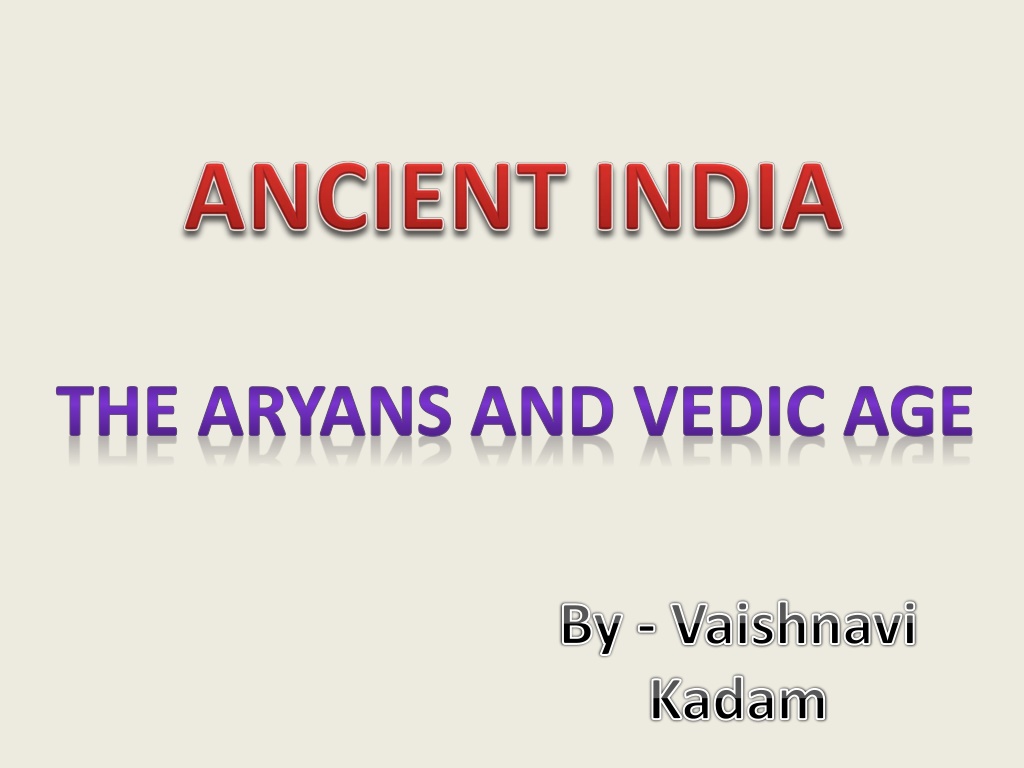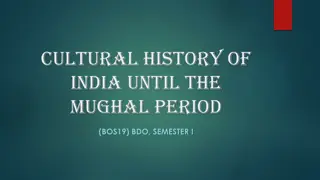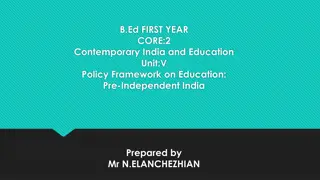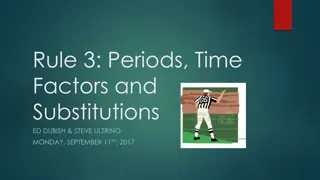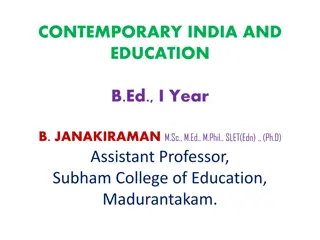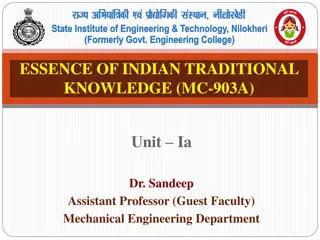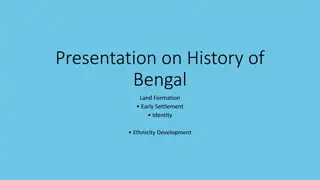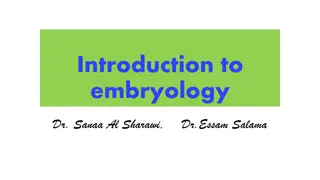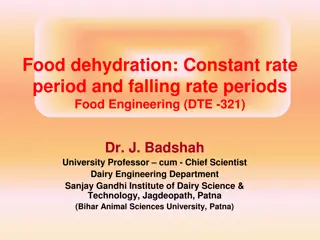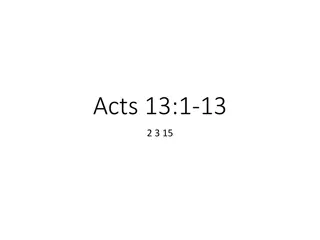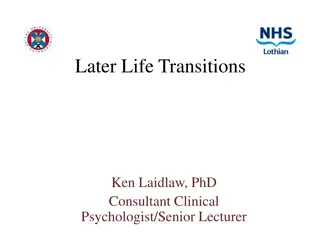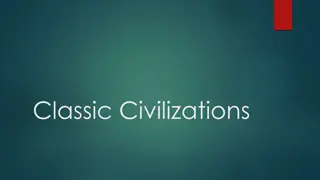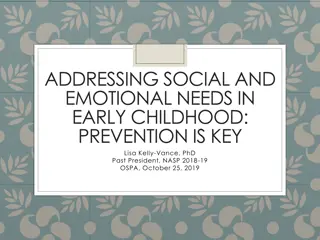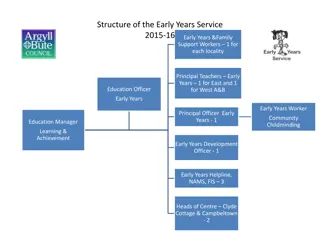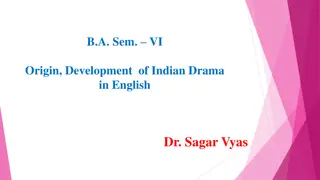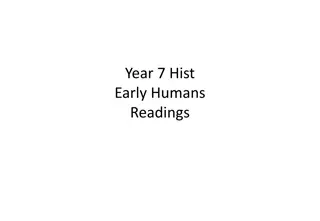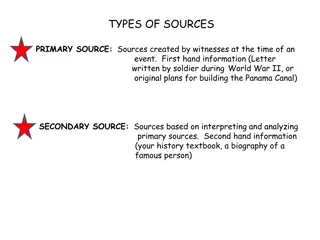The Aryans and Vedic Age - An Overview of Early and Later Vedic Periods
The Aryans, believed to have originated from Central Asia, played a significant role in shaping the Vedic Age in ancient India. This period saw the emergence of key political, economic, and religious developments, contributing to the foundation of Hinduism. From the Early Vedic Period characterized by pastoral and agricultural practices to the Later Vedic Age marked by societal divisions and the rise of kingdoms, the impact of the Aryans and Vedic literature remains profound in Indian history.
Download Presentation

Please find below an Image/Link to download the presentation.
The content on the website is provided AS IS for your information and personal use only. It may not be sold, licensed, or shared on other websites without obtaining consent from the author. Download presentation by click this link. If you encounter any issues during the download, it is possible that the publisher has removed the file from their server.
E N D
Presentation Transcript
THE ARYANS AND VEDIC AGE By - Vaishnavi Kadam
INTRODUCTION The Aryans : 1. Early Vedic Period 2. Later Vedic Period The Vedic Literature : 1. The Vedas 2. The Upanishadas 3. The Brahmanas 4. The Aranyakas Epics : Mahabharata, Ramayana, Puranas
Vedic Period : The Aryans The Aryans were semi-nomadic pastoral people and originated from area around the Caspian Sea in Central Asia. The Central Asian theory is given by Max Muller. Entered India probably through the Khyber Pass (Hindukush Mountains) around 1500 BC.
Early Vedic Age (1500-1000 BC) Political Organisation : Monarchial form. Tribe was known as Jan and its King as Rajan. Family was the basic unit of society. The family was patriarchial in nature.
Early Vedic Age Economy : Aryans followed a mixed economy- pastoral and agricultural in which cattle played a predominant part. Standard unit of exchange was cow. At the same time coins were also there.
Early Vedic Age Religion : Aryans laid the foundation of Hinduism. Hinduism is the world s oldest organized religion. It began as nature for favors. Thus, it has ,illions gods and goddesses representing natural forces and personified gods to suit human needs. They believe in karma(destiny) and reincarnation( a good soul is reborn after each into a higher status: a bad soul into a lower status or animal).
Early Vedic Age: Gods they worshipped
Later Vedic Age (1000-600 BC) Political Organisation : Tiny tribal settlements were replaced by strong kingdoms.
Later Vedic Age Social Life : The four fold division of society became clear initially based on occupation, which later became hereditary : Brahmins (priests), Kshatriyas (Warriors), Vaishyas (agriculturists, cattle-rearers, traders) and Shudras (servers of the upper three). The institution of gotra appeared for the first time in this Age.
Later Vedic Age Traditional Life : Turbans were also commonly used by them. Adorned their persons with gold & silver ornaments garlands & wreaths of flowers jewels etc. Ornaments were worn by men & women.
Later Vedic Age Caste System : The caste System has become part of Indian life due to the religious approval given to it by Hinduism. It divides people into rigid caste or classes: Brahmans Priests and scholars Kshatriyas rulers and warriors Vaishyas farmers, artists and merchants Sudras workers and slaves Untouchable - persons who do not belong to any class and the dirtiest work like cleaning toilets and collecting garbage.
Later Vedic Age Gurukul system of education : Entrance in gurukul at the age of 7 receive education till 25 years gurukuls deep in the forest Students like guru s children Guru- spiritual father Simple, disciplined lives Students cleaned house, drew water, gathered wood, worked in the fields oral method of teaching, learning Guru dakshina according to means, women not allowed
The Vedic Literature The Vedic Literature reflects the life and culture of the ancients Aryans of India. It consists of four literary works : Vedas : are composed of hymns, prayers, rituals, magic and poetry. They were the earliest sacred books of Hindus. Brahmanas : are prose texts containing observations on religious rites. Also include legends of the exploits of ancient kings and heroes. Aranyakas : are books of instructions for the hermits in the forests. Contains elaborate rules for the performance of religious ceremonies. Upanishads : also books of instructions given by a father to his son or the teacher to pupil.
Epics Mahabharata It was written in Sanskrit by Ved Vyas. It describes about war between Kauravas and Pandavas of 950 BC in Kurukshektra. Translation of Mahabharata in Persian is called Rajm nama done by Badayuni. Ramayana It was written by Vlmiki in Sanskrit. It has 24000 shloks, also known as Adi- Kavya. Its Persian translation is done by Badayuni and Tamil translation by Kamban. Ramcharitmanas is written by Tulsidasa.
18 Puranas (Gupta Age 4th cent.) Agni Purana Bhavishya Mahapuranam Vishnu Purana Garud Puran Kurma Mahapurana Linga Mahapurana Markandeya Purana Matsya Mahapurana Naradiya Mahapuranam Narasimha Puranam Shrimad Bhagwad Siva Mahapuranam Skanda Mahapuranam Skanda-Purana The Brahmanda Purana The Varaha Purana Vamana Purana Vayu Mahapurana
